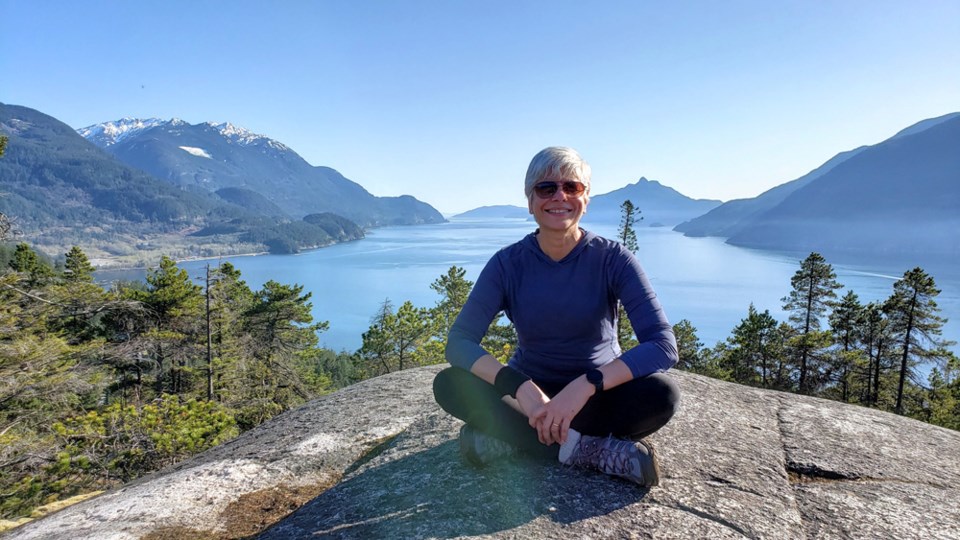's latest book for youth, Valley of the Rats has a biting opening line — literally.
"The night a rat bit my butt was my lucky night," the story begins.
The novel aimed at middle graders is the 14th story published by Furry Creek's Narsimhan.
Set in India, the book follows the anxious homebody Krish, 12, who begrudgingly accompanies his adventurous father Kabir, on a camping trip deep in a bamboo forest.
The pair stumble into the hidden village, Imdura, where secrets are revealed, and adventures abound.
The pair are allowed to stay, but only if they follow strict visitor rules. This is easier said than done.
The danger intensifies.
It is only with the help of the village's worshipped rats, that a way out can be found.
Valley of the Rats will be out Sept.18, but can be pre-ordered through and through its publisher: .
The Chief was sent a preview copy of the book and then caught up with Narsimhan for a wide-ranging chat.
What follows is a version of that conversation edited for clarity.
Q: I have to ask, why a book featuring rats?
A: I hate them. I am a city girl. I was inspired after doing research online. I found about the Karni Mata Temple in Rajasthan, where rats are worshipped. They have 15,000 rats, which are bred and nurtured. It is a major tourist attraction. Visitors can't wear shoes.
For me, that is the stuff of nightmares, but the people there believe that the rats are humans that are reincarnated. It is this whole cycle.
They believe in this so much that they feed the rats from their same plates — what a great story.
Q: I think a lot of parents will be getting requests for pet rats after their kids read this book because you do see them differently by the end.
A: The parents are going to kill me.
Q: What do you hope readers take away from this story?
A: The takeaway would be: we all have the courage to face whatever tough situation we are dealing with. Reach out for help if you need to. Give your perceptions and phobias a rest, keep an open mind and you never know where help might come from. It might come from the most unlikely of places.
Q: The main character struggles with pretty extreme anxiety, and it seems so realistic it made me wonder if you suffer from it as well?
A: I am a natural worrier about everything, but I did a bit of research about how you feel and the sense of paralysis, the sweating, and all of that. Krish uses candies to calm his nerves. When he gives his last candy to his rat friend, that was significant growth and change where he thinks of someone other than himself and realizes that if he accepts help, he can get over his phobias and move on.
Q: The story also shows that anxieties can be a positive thing too, if channelled for good, it seemed?
A: Absolutely. Fear can actually be something that keeps you alive. It is your survival instinct. It is that instinct that tells you something is not right. Sometimes that gut feeling is so important. I can't tell you how many times my gut feelings have saved me in certain situations. Of course, not always.
Q: Why did you make the main character a boy?
A: Boys are supposed to be strong and not show weakness — the stiff upper lip thing. I wanted boys reading it to also know that it is OK to be afraid. It is OK to be worried about something. I wanted to show a softer side of a boy who changes and grows. There is also Tashi, the girl who is a heroine.
Q: The theme of tourism is interesting. The people in the hidden village don't want to be discovered. Can you reflect on that as it relates to the Sea to Sky?
A: Dad and Krish, in the story, encroach on the village. They did not follow the rules and they are punished. When you talk about small communities, with people from the outside coming in, you see that the community has its way of doing things and working with nature. Tourists need to respect what the locals are doing. I think that is always going to be a struggle. You can't keep them out forever, but if you let them in, you are also letting in whatever notions and perceptions they come in with.
Q: Valley of the Rats has some scary moments. As parents, we want to shelter our kids from anything dark, but I know from raising my own four boys, they seem to need that exploration of scary things. Can you speak to that?
A: I think that kids definitely need to know the truth and the best way to explore darkness or evil or bad stuff that can happen to you is through the safety of the story. That is a safe environment. They feel scared — of course, the content has to be age-appropriate, absolutely — but through the story they can work through the whole spectrum of emotions and come out the other end. With middle-grade books, you do always have a hopeful ending. Readers can get inspiration from these books. There is change and growth at the end, and the readers can grow and change alongside, metaphorically.
Find more of Narsimhan's books at




